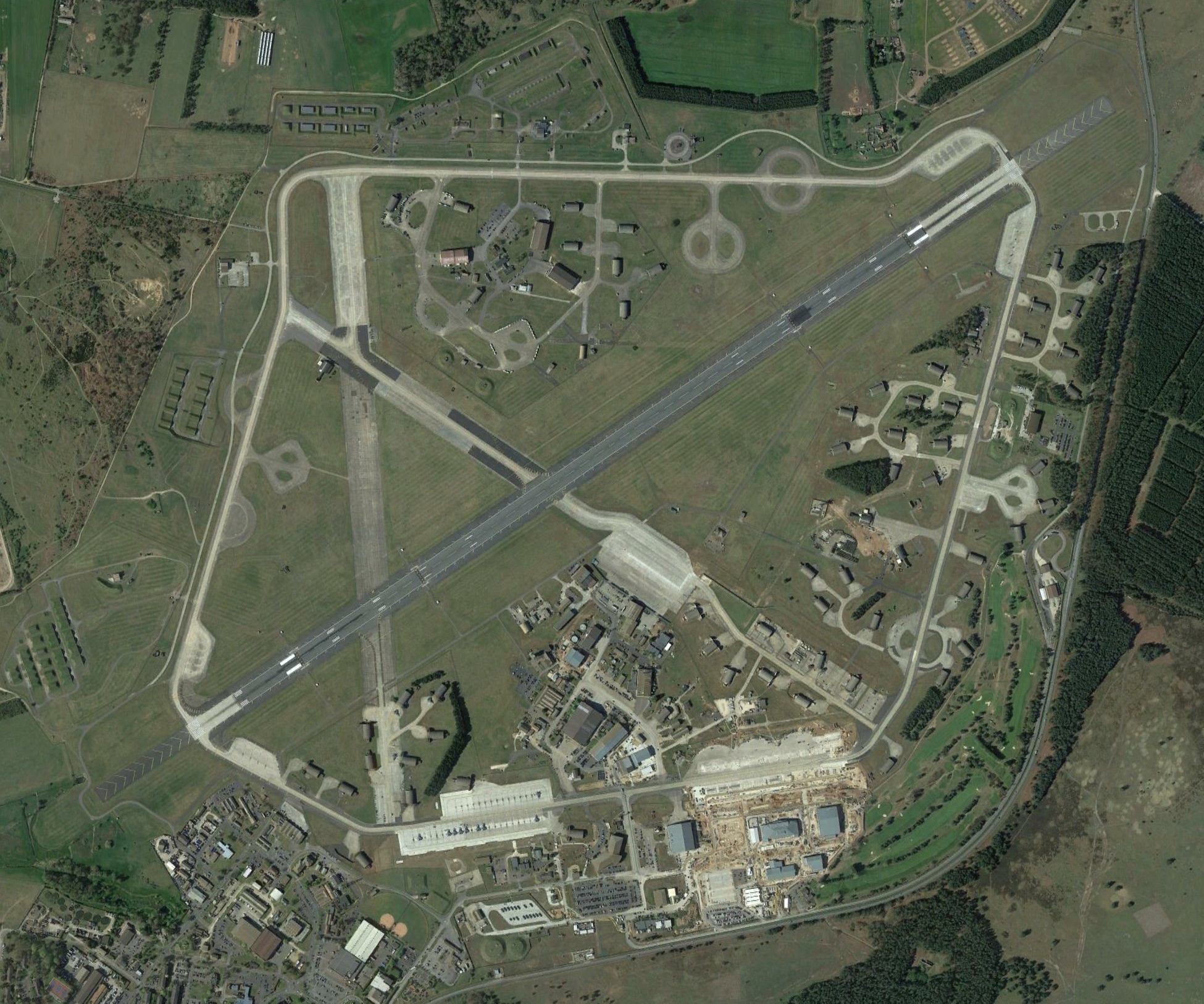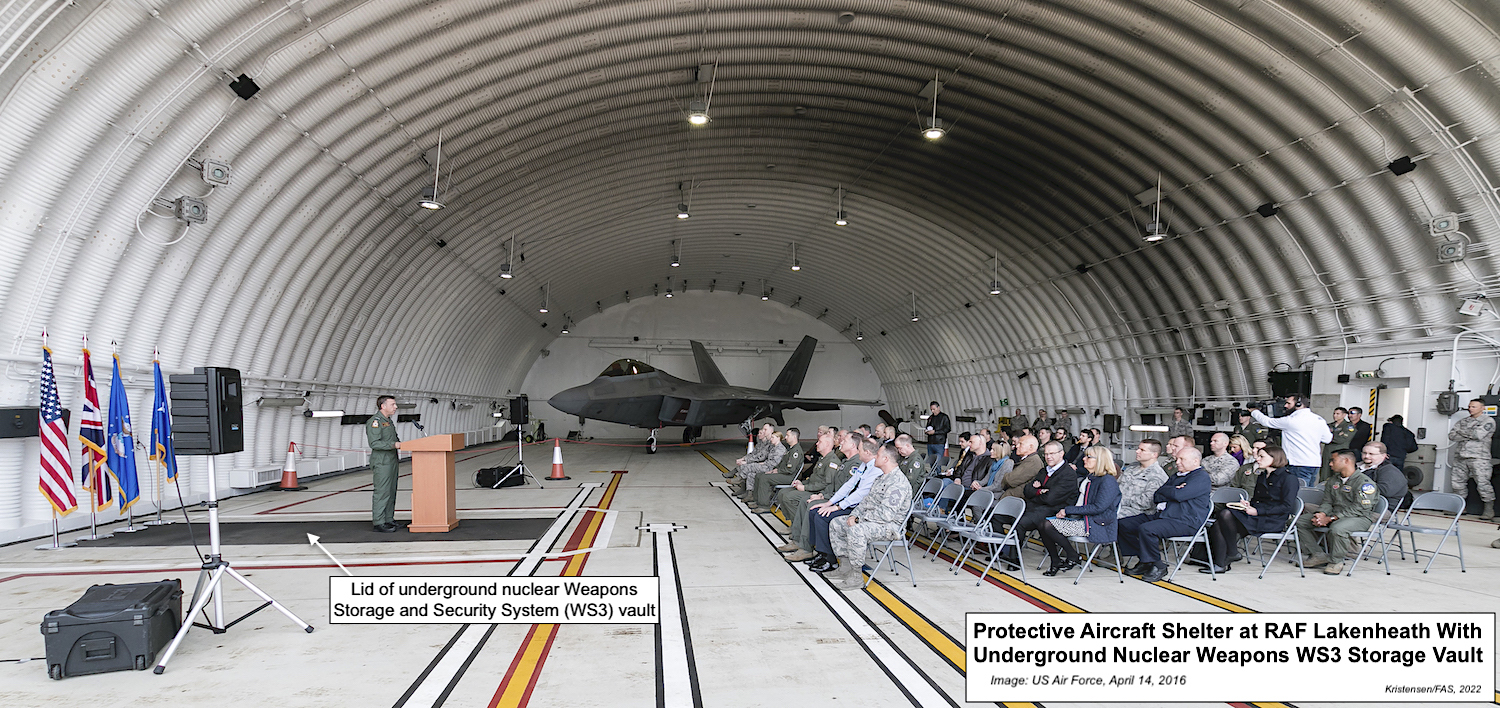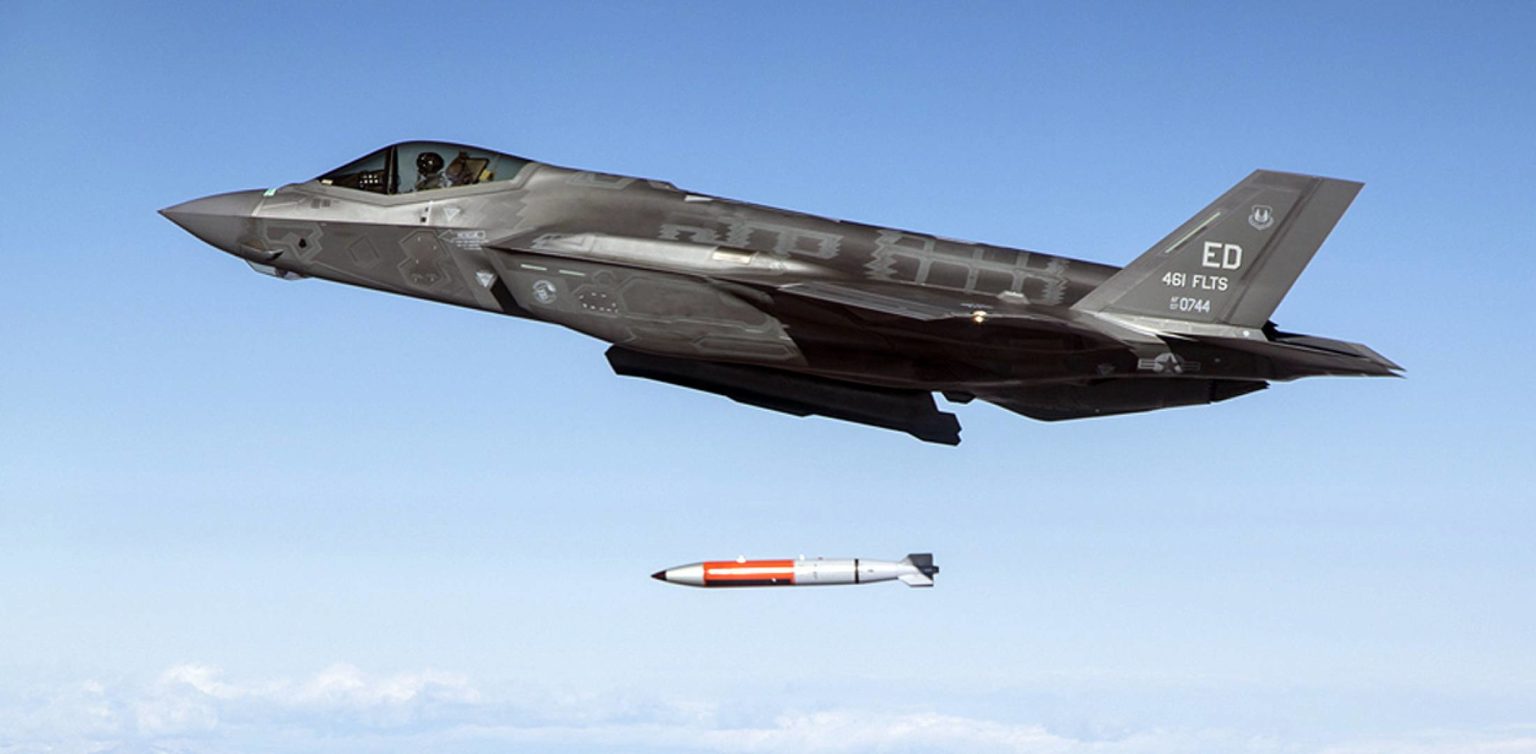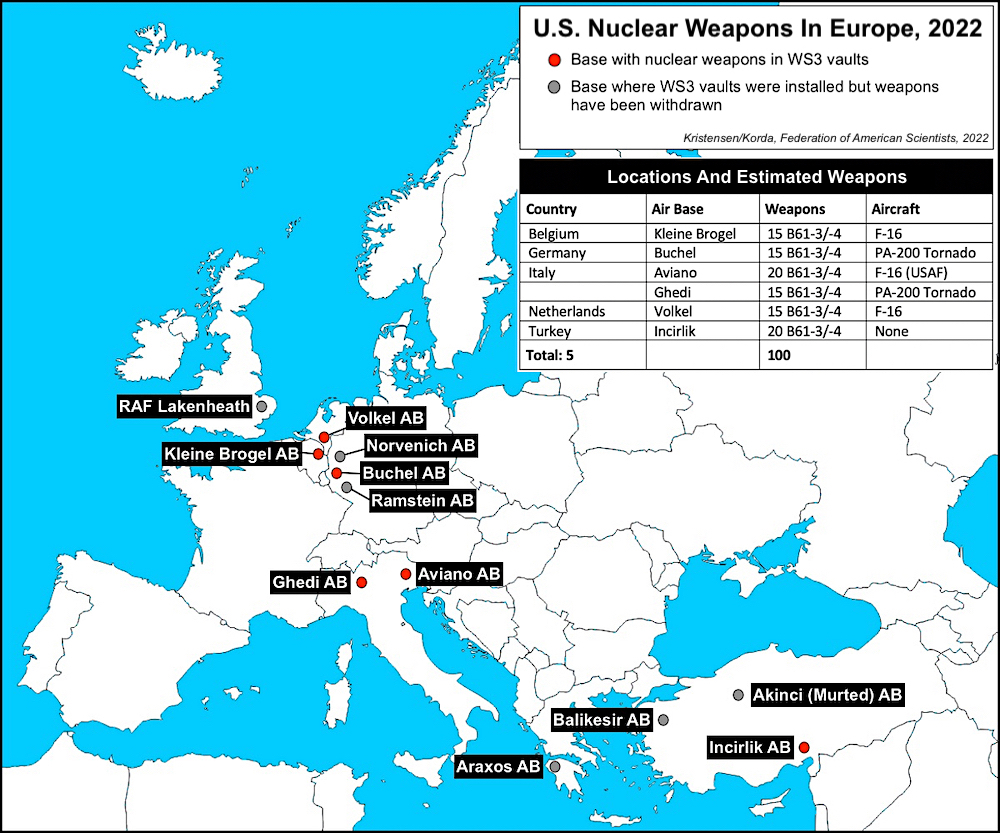Lakenheath Air Base Added To Nuclear Weapons Storage Site Upgrades

The US Air Force base at Lakenheath has been added to the list of nuclear weapons storage sites being upgraded in Europe.
US Defense Department documents show that NATO has quietly added the United Kingdom to the list of nuclear weapons storage locations that are being upgraded.
The documents do not identify the specific facility, but it is believed to be the US Air Base at RAF Lakenheath in southeast England approximately 100 kilometers northeast of London.
Previous budget documents listed “special weapons” storage sites in Belgium, Germany, Italy, the Netherlands, and Turkey as receiving upgrades under a 13-year NATO investment program. The Biden administration’s FY2023 defense budget request adds “the UK” to the list (see image below).

The United Kingdom has been added to the list of nuclear weapons storage site locations in Europe. Click on image to view full size.
RAF Lakenheath was not on the list of “active sites” in the 2016 contract for the upgrade of the nuclear weapons storage site in Europe. The budget documents indicate the base has since been added to the list.
The US Air Force used to store nuclear gravity bombs at Lakenheath, which in the 1990s was equipped with 33 underground storage vaults. By the early 2000s, there were a total of 110 B61 gravity bombs in the vaults for delivery by F-15E aircraft of the 48th Fighter Wing.
In 2008, I disclosed that the nuclear weapons had been withdrawn from RAF Lakenheath, the first time since 1954 that the United States did not store nuclear weapons in the United Kingdom.
What’s Going On?
The addition of the United Kingdom to the list of nuclear storage locations being upgraded in Europe signals a change in the nuclear status of RAF Lakenheath. It is unclear if nuclear weapons have been returned to the base yet or NATO is upgrading the base to be capable of receiving nuclear weapons in the future if necessary.
After nuclear weapons were withdrawn nearly two decades ago, the empty storage vaults were kept in caretaker status. The F-15Es fighter-bombers retained their nuclear capability but at a lower operational level. In recent years there have been rumors about nuclear exercises at the base.

A ceremony during a F-22 Raptor visit to RAF Lakenheath in 2016 was held inside an aircraft shelter with an (empty) underground nuclear weapons vault. There are 33 vaults at the base.
The nuclear upgrade comes as RAF Lakenheath is preparing to become the first US Air Force base in Europe equipped with the nuclear-capable F-35A Lightning. The first of the fifth-generation fighter-bombers arrived in December 2021. A total of 24 F-35As will form the 495th Fighter Squadron of the 48th Fighter Wing at the base.
The US Air Force is scheduled to begin training the nuclear units in Europe within the next year to receive the new B61-12 guided nuclear bomb that will begin full-scale production next month. It is possible the first B61-12 bombs will be shipped to Europe in 2023, where they will replace the B61-3/-4 bombs currently deployed there.

The US will begin full-scale production of the new B61-12 guided nuclear bomb next month, start training units in Europe around the turn of the year, and potentially deploy the first weapons in 2023.
Given NATO’s cautious nuclear response to Russia’s nuclear saber rattling at the start of its invasion of Ukraine, it would be odd if the nuclear upgrade at RAF Lakenheath reflected plans to deploy additional US nuclear bombs to Europe. FAS estimates there currently are roughly 100 nuclear bombs deployed at six air bases in five European countries.
NATO Secretary General Jens Stoltenberg declared in December 2021, that “we have no plans of stationing any nuclear weapons in any other countries than we already have these nuclear weapons as part of our deterrence and that… have been there for many, many years.” Unless NATO has changed its plans since, that seems to be a clear signal that there are currently no plans to deploy nuclear weapons to RAF Lakenheath for now (see map below).

RAF Lakenheath has been an inactive nuclear weapons storage site for nearly two decades. There are currently an estimated 100 US Air Force nuclear bombs stored in Europe.
Rather, the upgrade at RAF Lakenheath could potentially be intended to increase the flexibility of the existing nuclear deployment within Europe, without increasing the number of weapons. Adding RAF Lakenheath as an active site would potentially allow it to receive nuclear weapons from other existing locations in Europe, if that became necessary. Such a contingency could potentially involve receiving weapons withdrawn from Turkey. There are unconfirmed rumors that many of the weapons at Incirlik Air Base in Turkey have already been withdrawn and moved to other bases in Europe.
Readying RAF Lakenheath could potentially also be intended to better realign the overall nuclear posture in Europe with the rapidly deteriorating relations with Russia. This is a delicate issue because changes in NATO’s nuclear posture in Europe might trigger retaliatory changes in Russia’s nuclear posture, including potentially deployment of nuclear weapons to Belarus, which recently changed its constitution to allow for just that.
This publication was made possible by generous support from the John D. and Catherine T. MacArthur Foundation, the New Land Foundation, the Ploughshares Fund, and the Prospect Hill Foundation. The statements made and views expressed are solely the responsibility of the author.
The FY2026 National Defense Authorization Act (NDAA) paints a picture of a Congress that is working to both protect and accelerate nuclear modernization programs while simultaneously lacking trust in the Pentagon and the Department of Energy to execute them.
While advanced Chinese language proficiency and cultural familiarity remain irreplaceable skills, they are neither necessary nor sufficient for successful open-source analysis on China’s nuclear forces.
Satellite imagery has long served as a tool for observing on-the-ground activity worldwide, and offers especially valuable insights into the operation, development, and physical features related to nuclear technology.
This report outlines a framework relying on “Cooperative Technical Means” for effective arms control verification based on remote sensing, avoiding on-site inspections but maintaining a level of transparency that allows for immediate detection of changes in nuclear posture or a significant build-up above agreed limits.